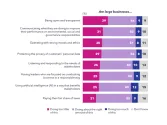
Healthcare deals surge as the Asian population ages
The rise in chronic diseases is boosting the need for more services.
Historically, per capita healthcare spend by Asian countries has been miniscule compared with that of mega-spenders like the US or Norway. However, with an ageing population, rising affluence, and demand for better health services in Asia, healthcare expenditure growth in the APAC region is set to outstrip North America’s.
Healthcare spending in Asia is expected to grow at a compounded annual growth rate of 9.2% in the near term, compared with 5.6% in the US. In fact, the growth of healthcare spending in many APAC countries has exceeded economic growth over the past few years, resulting in an increasing share of the economy being devoted to health. Between 2000 and 2012, per capita spending on health in Asia grew on average ~5.6% in real terms, while GDP growth was at ~4.3%. Despite the substantial growth already taking place in the Asian healthcare industry, the lion’s share of M&A activity is still happening in the US, and only ~20% of global healthcare M&A activities in 2012-2013 were transacted in Asia. 2014 was a record year for healthcare M&A activity worldwide – nearly 2,500 deals took place at a total value of ~$412B. Once again, the US dominated with ~66% of that activity being attributable to US domestic deals.
There are several reasons why investors may still be hesitant to focus on Asia – companies are relatively small and may not be in the right stage of growth, diligence is harder to perform, and politics and bureaucracy create barriers and make the region less attractive.
However, there is much profit to be had for those who truly understand market needs and are willing to explore a variety of investment avenues and platforms, such as joint ventures or public-private partnerships.
Demand drivers
The APAC region is currently home to ~300M people aged 65 or above – over half of the world’s total senior population. This number is growing rapidly due to improvements in life expectancy. As a result, Asia’s ageing population is expected to reach~565M by 2030. Japan is home to the fastest-ageing population in the world, with almost a quarter of its population being over the age of 65 – far more than in the US and Europe. Hong Kong, China, Thailand, the Republic of Korea, and Singapore are also seeing a rise in their elderly populations. This trend will accelerate demand for healthcare products and services catering specifically to the 65+ segment.
Many elderly patients prefer to be at home with their loved ones and are willing to pay for the convenience of home healthcare services rather than be admitted to a healthcare facility. The global market for home healthcare is expected to grow at a CAGR of 7.8% to reach ~$355B by 2020, with the APAC region expected to grow fastest at a CAGR of 9.7%. However, there have been just two home health and hospice related deals in Asia in the last two years, compared with 58 in the US over the same period.
A few fast-moving home healthcare providers in the U.S. have identified the gap in Asia and have already started to enter the space. For instance, in 2013, US–based home healthcare firm Bayada purchased a 26% stake in Chennai-based India Home Health Care. This is the first investment outside the US for the privately held Bayada.
Similar to the home health space, other products and services specifically for the elderly living alone – such as ambulance services, medical alert devices/personal emergency response systems (PERS), and animal companions – will also see growth. For instance, the global PERS space is set to reach ~$2B by 2020, with ~30% of that market value being derived from Asia.
Chronic diseases are the leading cause of mortality in the world – representing 63% of all deaths – and are growing faster in Asia than in the rest of the world. In 2013, diabetes caused about 5M deaths worldwide, and over 60% of them occurred in the APAC region. The growing prevalence of diabetes and other chronic diseases – such as coronary heart disease and cancer – has created a need for specialty care facilities, wellness plans, healthy products, and health tracking/measuring devices.
The APAC region is currently home to ~215M people who live with diabetes, and this number is expected to reach ~366M by 2030. Projections of significant growth within the region have spurred international players to pursue acquisitions. For instance, KKR recently completed its biggest buyout to date in Japan by acquiring an 80% stake in Panasonic Healthcare – a provider of digital medical-record systems and instruments that measure blood glucose.
With the increasing need to keep track of chronic disease data, big data analytics is also gaining momentum in the Asian healthcare industry, and specialized companies are already making use of this opportunity. For example, US-based Truven Health Analytics, a provider of healthcare data analytics solutions and services, announced the opening of a Singapore-based regional head office to cater to the exponential adoption of patient and clinical data management technology in Asia.
Furthermore, there is an increasing demand for wellness products in Asia – in 2013, of the top 10 fastest-growing markets for health and wellness packaged food, five were APAC countries. China, Indonesia, Vietnam, Thailand, and India are significant growth markets that may be of interest to potential investors.
Supply constraints
Governments in Asia, on average, finance ~48 % of total healthcare expenditure in the region (about the same percentage as US public expenditures). This share has increased at a CAGR of just 0.7% in Asia since 2000, resulting in a significant role for the private sector in catering to the rapidly rising growth in demand.
At 3.3 per 1,000 persons, the number of hospital beds in Asia is lower than the OECD average of 4.8, but with significant differences between countries – ranging from 13 beds per 1,000 population in Japan to 0.5 per 1,000 population in the Philippines. Private hospitals in the region are growing, however, and favourable government policies in several countries are also encouraging investments in state hospitals and public-private partnerships.
For example, Seattle-based Columbia Pacific Management Inc. is investing up to $200M to construct two 250-bed multi-specialty hospitals in China. The investment came after China lifted restrictions on foreign-owned hospitals to improve healthcare and address the medical needs of a wealthier, ageing population. Chinese authorities in 2014 set up a pilot program that allowed foreign investors in some parts of the country to set up hospitals or acquire existing ones.
Also, in pursuit of lower-cost, higher-profit care options, providers in Asia are expanding beyond the traditional acute hospital setting into outpatient clinics and standalone surgery centres. Each of these areas, and more, represents possible growth and investment opportunities.
Even with rising wages, healthcare is still expensive – especially as many Asian countries lack adequate health insurance plans. High medical costs, coupled with low penetration rates of public insurance, open up an opportunity for private insurance companies such as Cigna Corporation, which recently entered into a joint venture with Indian conglomerate TTK Group to sell health insurance products in India.
There is scope for equity sponsors to back small, fast-growing companies individually or in combination, as distribution channels emerge and the entire ecosystem grows. With the substantial growth and variability between markets and customer groups, the keys to success in Asia lie in understanding the nuances of markets, opportunities, and risks, and in determining where to build and invest in organic growth versus where to acquire and ride the wave of market growth on current infrastructure. by Sanda Wijeratne, Manager, STAX



















 Advertise
Advertise







